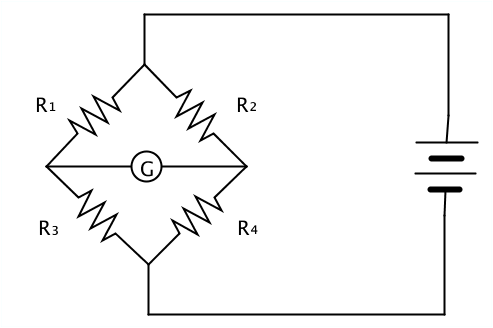Wheatstone Bridge
Electronic measuring instruments like electronic scales detect and measure the resistance change of sensor material. To increase the sensitivity of measuring instruments, it is necessary to measure minute resistance values changes precisely.
In this case, the main circuit used is the "Wheatstone Bridge" circuit, which consists of four resistors.
When used as a sensor, replace one of the four resistors with the sensor material and measure the resistors' potential difference.

The Wheatstone Bridge circuit can measure the resistance value with high accuracy because the output voltage "V G" changes drastically with subtle changes in resistance value.
\[ V_{ G }={ V }_{ 0 }(\frac { { R }_{ 3 } }{ { R }_{ 1 }+{ R }_{ 3 } } -\frac { { R }_{ 4 } }{ { R }_{ 2 }+{ R }_{ 4 } } ) \]
Equilibrium condition of Wheatstone Bridge
When the voltage "VG" applied to both ends of the galvanometer, "G" becomes "0", it is in equilibrium. The equilibrium condition is as follows.
If you do not know the resistance value of any of the four resistors, you can easily calculate it using the above equation.